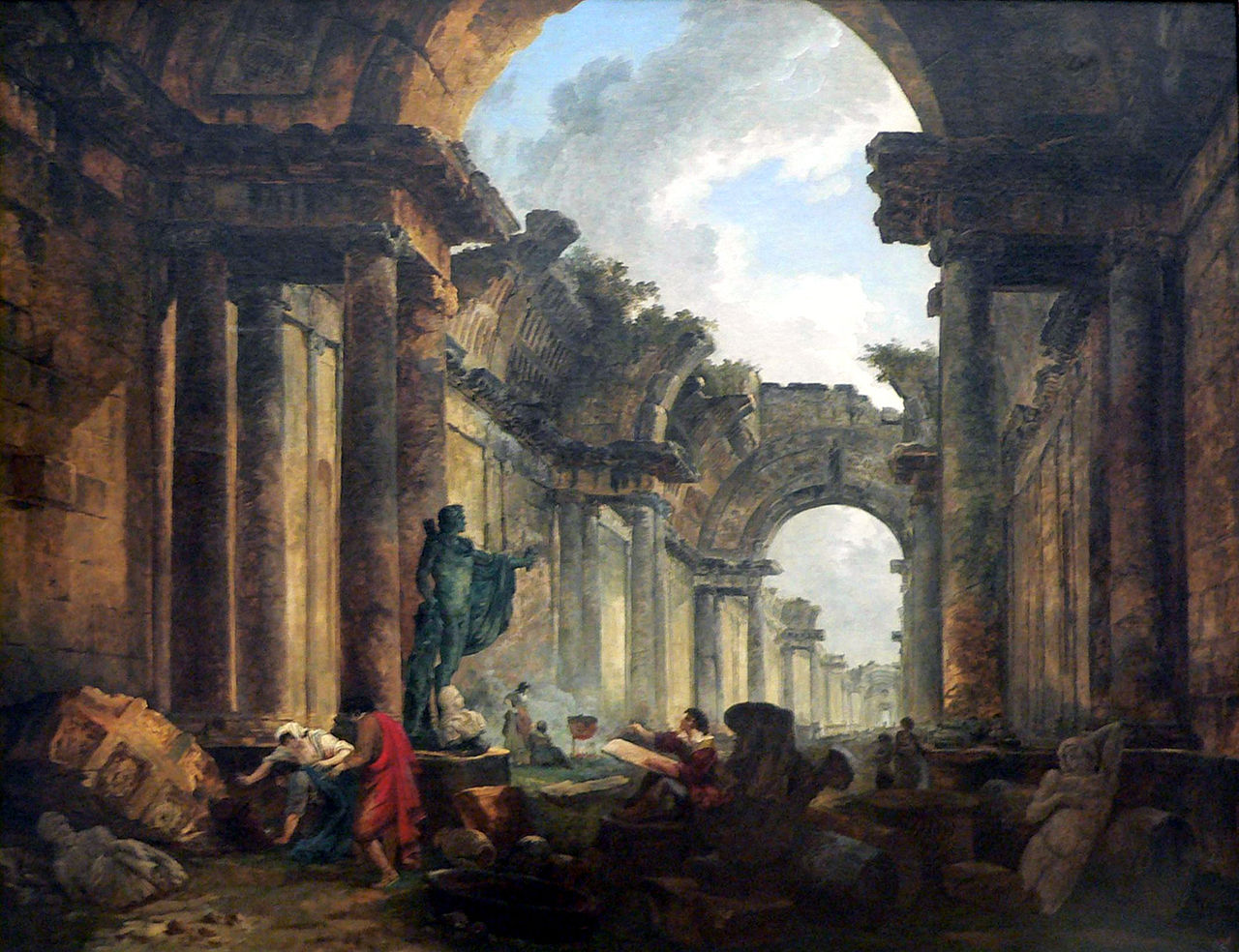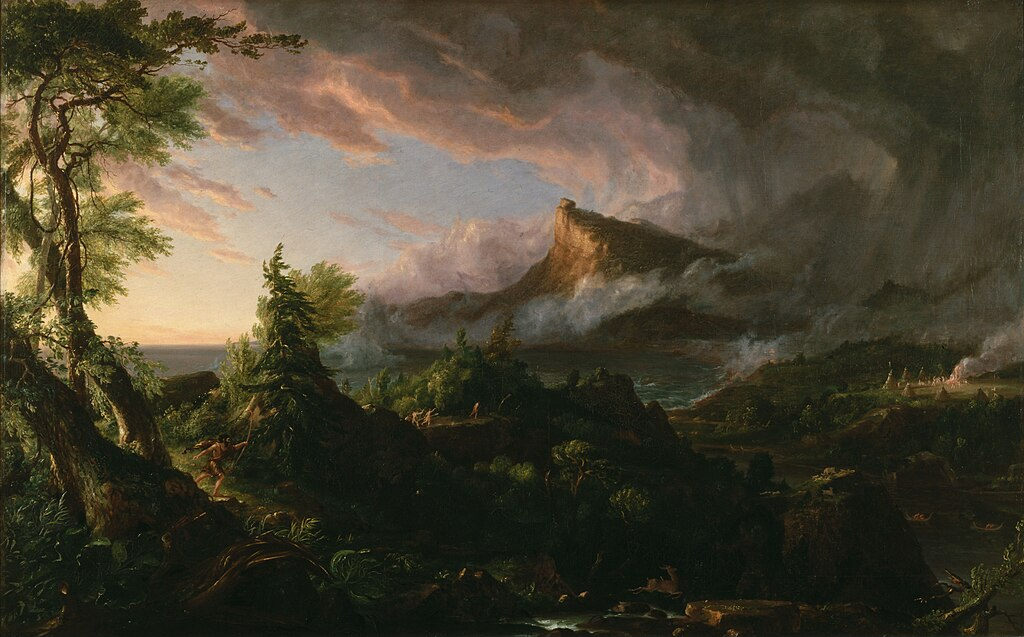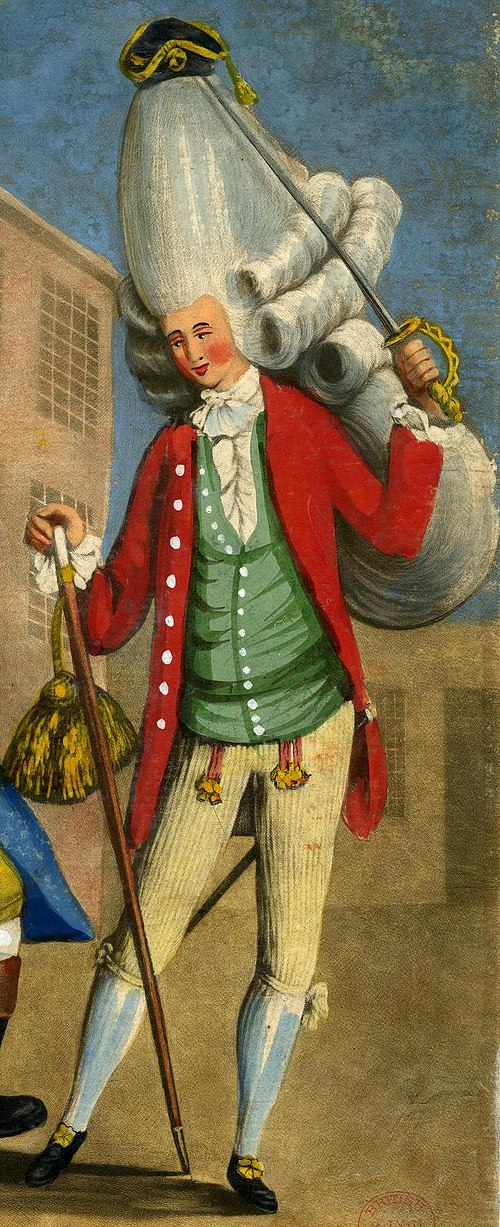created, & modified, =this.modified
tags:y2025ruinsfragements
rel:Ruins and Fragments by Robert Harbison
Why I’m reading
More reading on ruins. This book, which I own physically, contains pictures and I expect a lot of the text below will be jumping off points for further readings, which I’ll include.
Paintings such as Thomas Cole’s last picture in his 1836 series “The Course of an Empire”, Desolation suggests that Rome is now a pile of undefinable fragments.
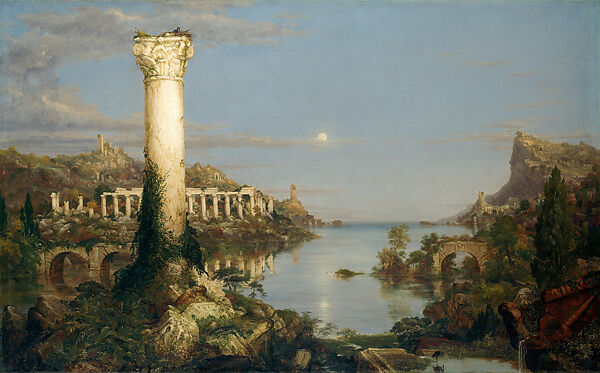
Thought
Thomas Cole was involved with the Hudson River School.
Cole said on the painting: “violence and time have crumbled the works of man, and art is again resolving into elemental nature. The gorgeous pageant has passed, the roar of battle has ceased – the multitude has sunk into the dust – the empire is extinct.”
The series begins with The Savage State which features a sunrise, and ends with a moonrise.
In Batty Langley’s New Principles of Gardening published in 1728, she provides a design entitled “Ruins for the Termination of an Avenue”
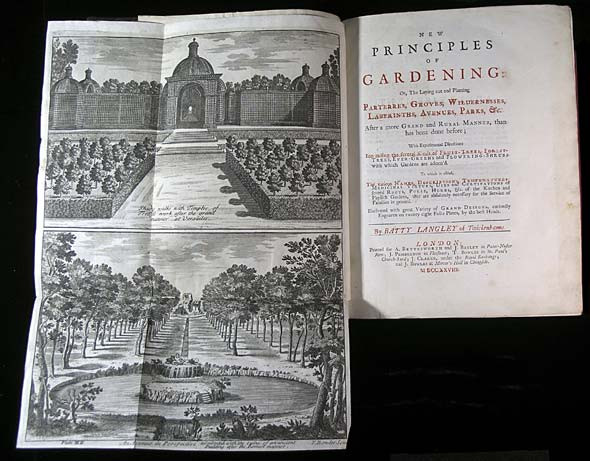
Further, I read:
In the planting of groves, you must observe a regular irregularity; not planting them according to the common method like an orchard, with their trees in straight lines ranging every way, but in a rural manner, as if they had receiv’d their situation from nature itself.
Many English aristocrats might have experienced the Grand Tour or an educational journey across Italy and Greece, and would then welcome this style, reminiscent of Roman ruins.
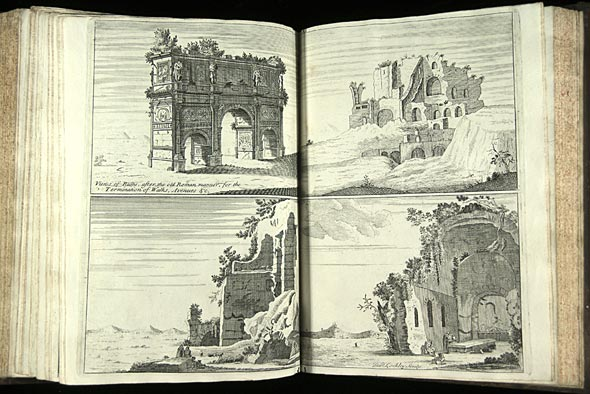
Grand Tour
Grand Tour
The Grand Tour was a 17th to early 19th century custom of a trip through Europe, with Italy as a key destination, undertaken by upper-class young European men, typically undertaken with a tutor (cicerone) or family member.
The tradition declined as enthusiasm of classical culture waned and the steamship travel era enabled mass tourism in the 1870s.
The typical 18th-century stance was that of the studious observer travelling through foreign lands reporting his findings on human nature for those unfortunates who stayed at home. Recounting one’s observations to society at large to increase its welfare was considered an obligation.
Critics of the tour derided the lack of adventure as a “tame, uniform, unvaried prospect.”
The idea that the experience might undo him was exemplified in the Macaroni.
Macaroni
A macaroni was a pejorative for a fashionable fellow in 18th-century Britain. This subculture dressed, spoke and behave₫ in an androgenous manner. The macaroni became stereotyped as a symbol of inappropriate excess and effeminacy.
In addition to creating ruins, artists in the first half of the 18th century painted interiors of buildings so they appeared to be ruins.
Giovanni Francesco Marchini’s frescos appeared to be falling on the viewer.
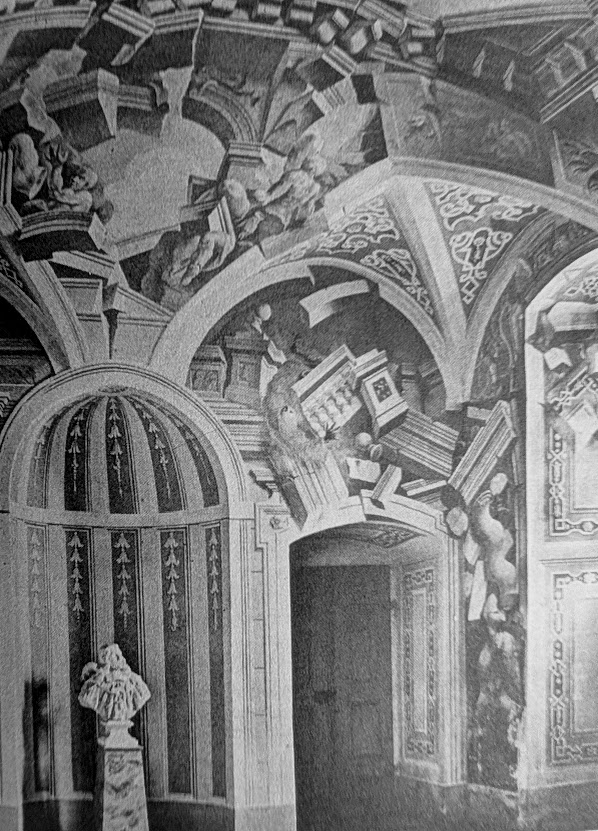
To be painted in a hermit fashion
or resemble the ruins which a hermit might dwell and meditate.
Piranesi
The 1750s were the beginning of Neo-Classicism in architecture, where travelers and students came to Italy to see the ancient monuments, explore excavation. This is seen in the print of Piranesi, Giovanni Battista Piranesi.
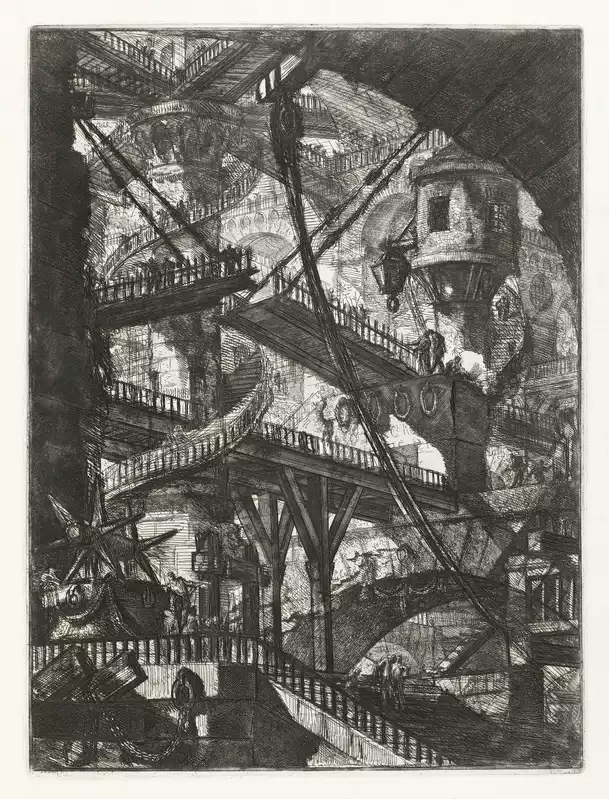
He created over 1K prints of Roman ruins, such as Basilica of Maxentius. Some of his works featured exaggeration in the scale and quantity of the stone, “to the point of theatricality.”
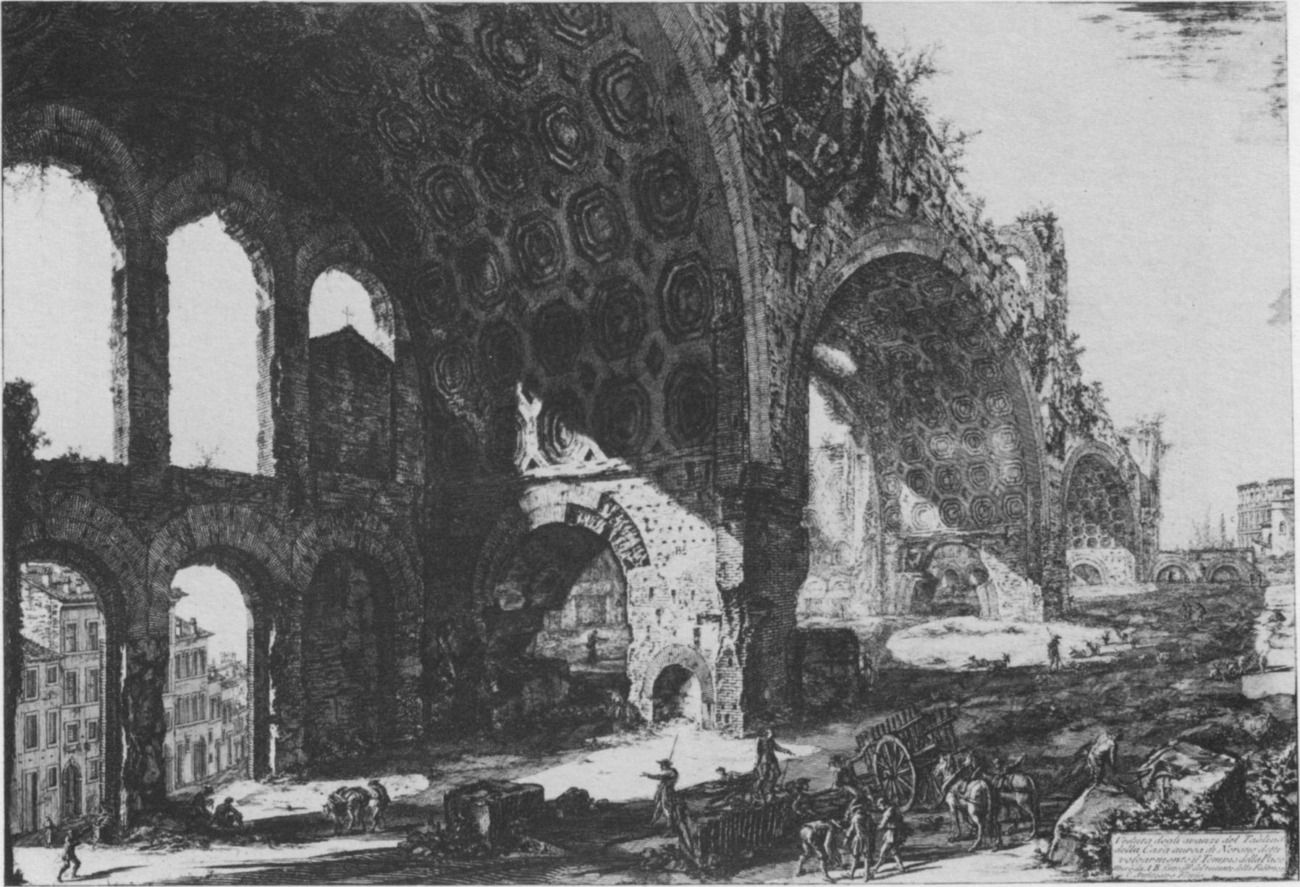 This imagined antiquity would serve as the basis for actual buildings in the future. Piranesi’s prints, if seen first, made those who visited the actual ruins later, view them as dull by comparison.
This imagined antiquity would serve as the basis for actual buildings in the future. Piranesi’s prints, if seen first, made those who visited the actual ruins later, view them as dull by comparison.
Adam’s Library in the Kenwood House shows the influence of Piranesi’s “Room for the Use of an Ancient Roman”
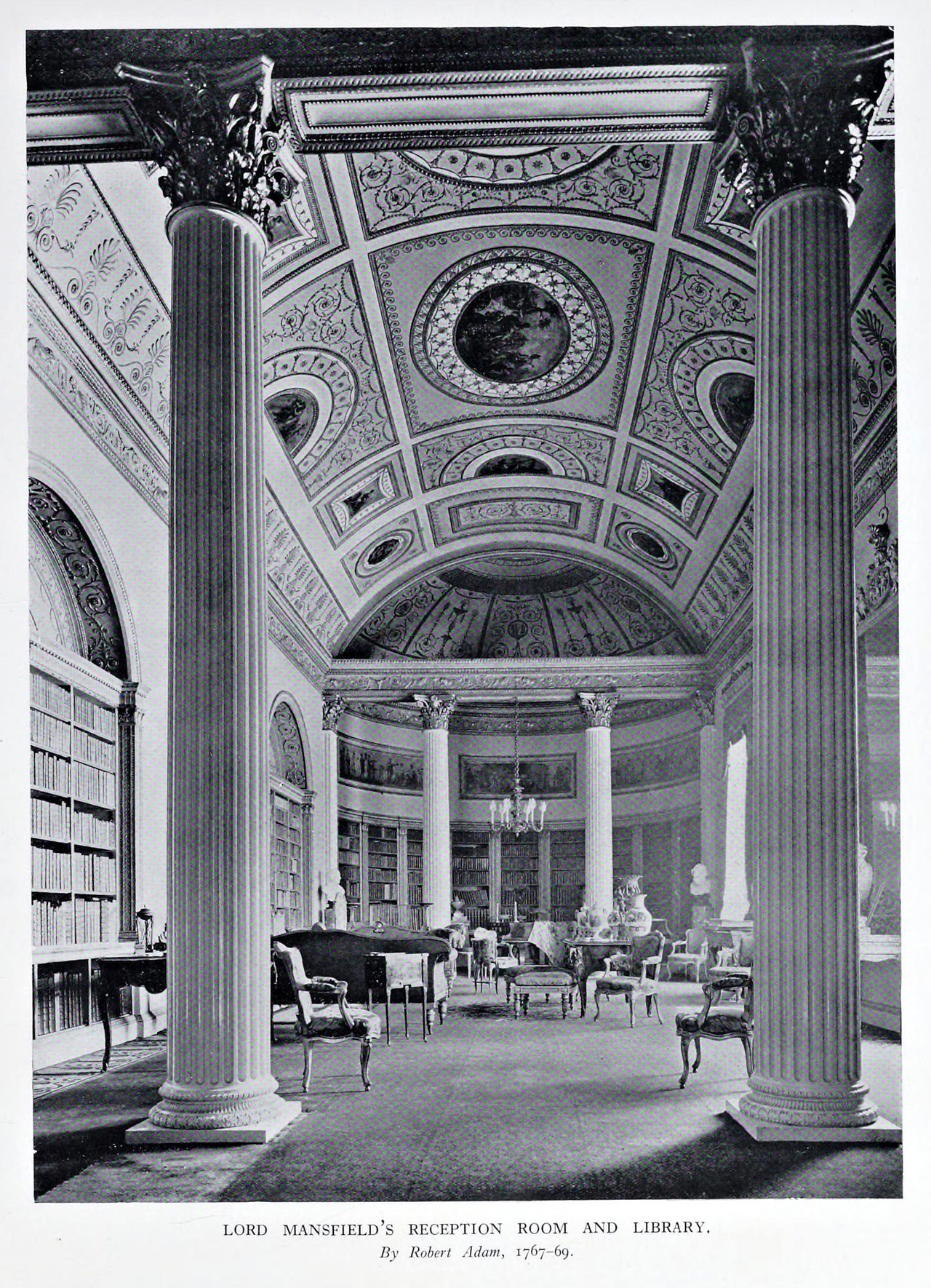
de Monville’s House at Désert de Retz
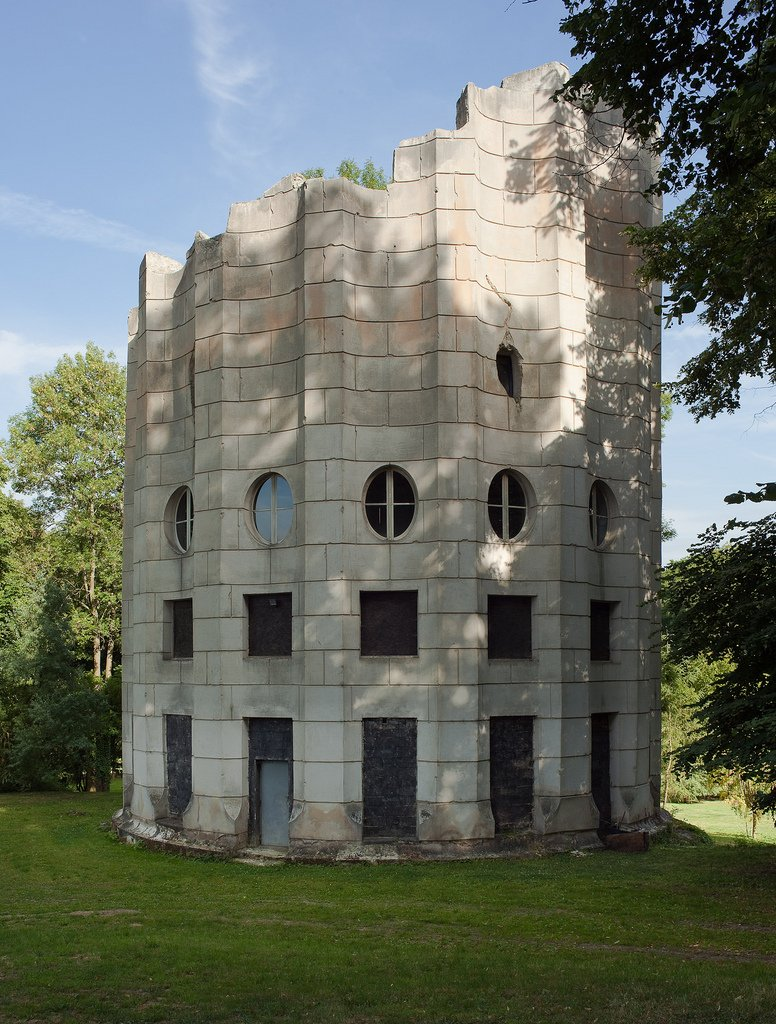 In 1774, it was conceived of as a giant fifty-foot ruined column, a ruin and an intact house to be lived in.
In 1774, it was conceived of as a giant fifty-foot ruined column, a ruin and an intact house to be lived in.
Thomas Jefferson visited in 1786 and proclaimed “How grand the idea excited by the remains of such a column.”
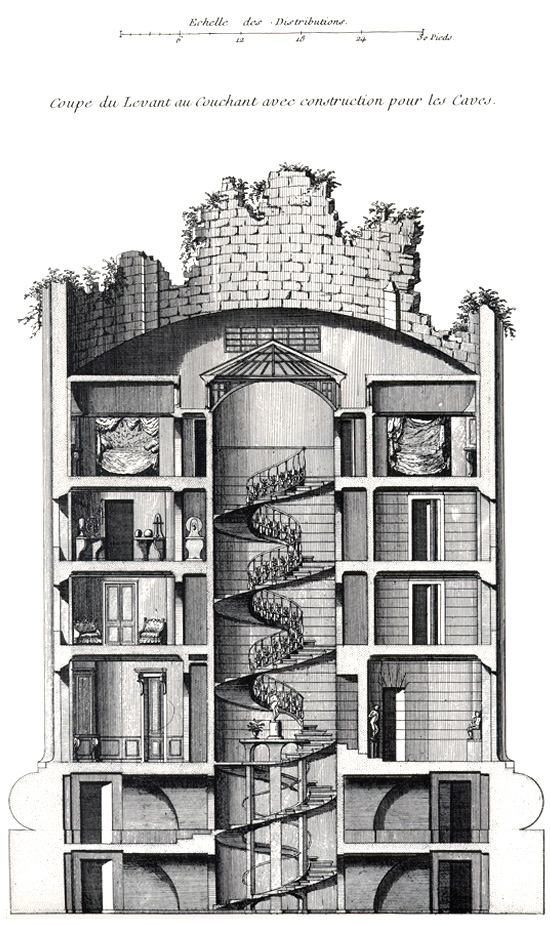
Hubert Roberts
The Grand Gallery of the Louve in Ruins.
